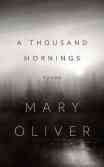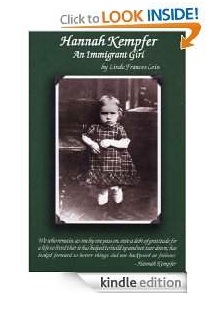A Book Review of A Thousand Mornings: Poems by Mary Oliver
Reviewed by Linda Frances Lein
 As we have come to expect from Pulitzer Prize-winning poet Mary Oliver, observations of small, pristine moments in the natural world spring up in her newest collection of poems A Thousand Mornings.
As we have come to expect from Pulitzer Prize-winning poet Mary Oliver, observations of small, pristine moments in the natural world spring up in her newest collection of poems A Thousand Mornings.
A redbird, black snake, fox, fish, a mockingbird, bats, a white heron, and her dog Percy who “listened to poems” are a few of the critters that readers encounter (74). She makes the meeting of the wild critters feel like a routine occurrence as if they are not instinctively afraid of her as they might be of other human intruders in their world.
White flowers, daffodils, black oaks, leaves, pond lilies, pale dunes, high grass, “blue gray green lavender” tides are the terrain that we linger in when reading Oliver’s work (57). Many of these poetic natural images are from her home and community Provincetown, Massachusetts, where townspeople might catch a glimpse of her walking, stopping, looking or listening, and writing in her notebook, a regular ritual of hers.
Amidst Oliver’s earthy images, readers find spiritual journeys and connections as well (5). This is not new in her poems but rather is an ongoing pilgrimage for her. For example, in “On Traveling to Beautiful Places” she writes:
Every day I’m still looking for God
and I’m still finding him everywhere,
in the dust, in the flowerbeds.
Certainly in the oceans,
in the islands that lay in the distance
continents of ice, countries of sand.” (67)
And Oliver also makes comparisons between the natural world and human nature, an opportunity to find a sense of self and belongingness. For instance, in “The Poet Compares Human Nature to the Ocean from Which We Came” she writes:
…it can rise, ebb, froth
like an incoming frenzy of fountains, or it can
sweet-talk entirely. As I can too,
and so, no doubt, can you, and you.
What may surprise the reader are the poetic references to Oliver’s writing process—her walks, notebooks, pens, and words of past poets. For example, in “I Happened to be Standing” she writes:
While I was thinking this I happened to be standing
just outside my door, with my notebook open,
which is the way I begin every morning. (3)
In “Foolish? No, It’s Not” she writes:
Sometimes I spend all day trying to count
the leaves on a single tree. To do this I
have to climb branch by branch and
write down the numbers in a little book. (5)
And in “Hum, Hum” she writes:
Also the words of poets
a hundred or hundreds of years dead—
their words that would not be held back. (42)
Oliver’s poems—this collection and others—will live long among those words of poets as well. Her work has been, and will continue to be, anthologized for today’s readers and generations to come. Her words will not be held back. They will sing “full of earth-praise” (5).
Mary Oliver’s book A Thousand Mornings will resonate with readers. They will walk the beach, climb trees, listen to the birds’ songs, and touch the delicate, soft petals of flowers. This and so much more will cause readers to read, ponder, and re-read the 36-poem collection.
Reprinted with permission from Englewood Review of Books (November 2012)

